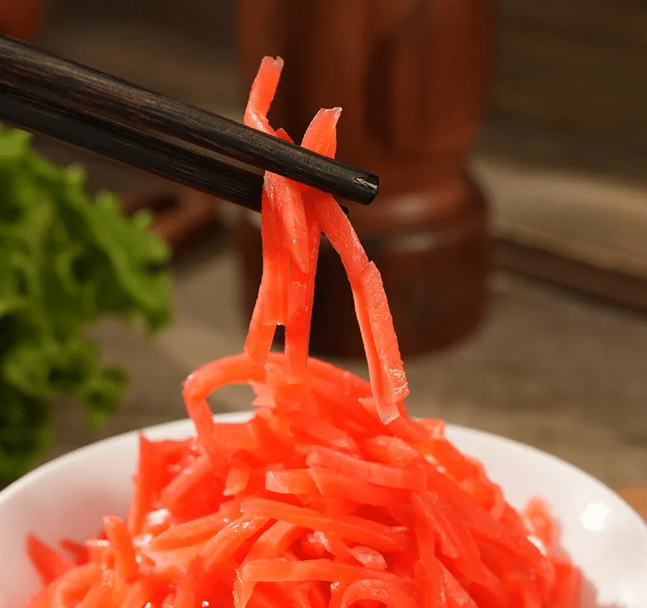In Japanese restaurants, you can often see free beni shōga (red pickled ginger strips) placed on the table, and in sushi restaurants, there’s another ginger-based side dish called gari.
Why is it called “gari”?
It’s not just sushi shops — if you buy sushi in major supermarkets across Japan, it will usually come with these ginger slices. In these cases, they have a specific name: gari, generally written in kana (ガリ). “Gari” is the colloquial name for the sweet pickled ginger (amazu shōga) served in sushi restaurants. The name comes from the Japanese onomatopoeia “gari-gari”, which describes the crunchy sound when chewing firm foods. Since eating these ginger slices produces that same “gari-gari” crunch, people started calling them “gari.” Sushi chefs adopted the term, and it eventually became the standard nick name.
The custom of eating gari with sushi is said to date back to the mid-Edo period in Japan. At that time, street stalls selling Edomae-zushi (hand-pressed sushi) were extremely popular. However, refrigeration technology hadn’t yet been developed, so eating raw fish carried a real risk of food poisoning. To help prevent this, shop owners began serving thin slices of ginger pickled in sweet vinegar alongside sushi, as pickled ginger has antibacterial and deodorizing properties.
Even today, Japanese people believe that eating gari with sushi — much like using wasabi — helps kill bacteria and reduce the risk of foodborne illness.
Sweet-vinegar-pickled ginger has a tender yet crisp texture, a sweet-sour balance, and only mild spiciness. This makes it excellent for cleansing the palate between bites of fish, stimulating the appetite, and refreshing the taste buds — without overpowering the sushi itself. The best gari is made from young ginger (shin-shōga), which is peeled, sliced thinly along the fibers, lightly salted, blanched to mellow its heat, and then pickled in a mixture of vinegar, sugar, and water. This process — still used by many artisanal producers today — gives high-quality gari its signature translucent blush-pink color and delicate crunch.
By contrast, beni shōga (red pickled ginger strips) is made from mature ginger, julienned, salted, and pickled with perilla juice (shiso) or plum vinegar (umezu), which gives it a vivid red hue and a more pungent bite. That stronger flavor pairs perfectly with gyūdon (beef bowls), takoyaki, or yakisoba, where it cuts through richness and refreshes the palate.
Contact
Beijing Shipuller Co., Ltd
WhatsApp: +86 136 8369 2063
Post time: Oct-28-2025

